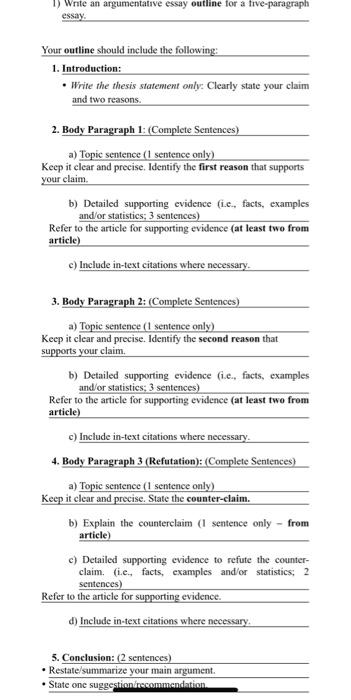How to Write a Body Paragraph For an Argumentative Essay
You may have heard about the idea of writing a topic sentence for an argumentative essay, but do you know how to write one? Essentially, a topic sentence is a sentence that introduces your argument and moves it up a level. Some paragraphs don’t need topic sentences; those that explain a series of events or develop a concept don’t need them. However, topic sentences are very important, and some paragraphs are self-explanatory.
Appeal to the reader’s emotions
In writing persuasively, it is important to appeal to the emotions of the reader. Using the five senses to describe a scene or a situation is a powerful way to appeal to the emotions of the audience. The reader can connect with the story because it is relatable and evocative of something they know. In addition, you can use questions to pique the interest of your reader.
One effective way to appeal to the reader’s emotions is to use words with pathos. These words evoke feelings of pity or sadness. Other examples of words with pathos include powerful, tragic, free, equality, and power. Emotional arguments are highly effective when they help the reader relate to the topic. They can also connect with a viewer on a personal level.
Refute counterarguments
Refuting counterarguments is a critical part of argumentative essays. Despite their name, counterarguments are not necessarily counter-arguments, and they should not take up too much space. Otherwise, the reader will become distracted and not understand your main point. There are many ways to incorporate counterarguments into your essay. Remember to refute them in the body paragraph of your essay to make it stronger. Graff and Birkenstein (2009) outline templates that can help you write counterarguments.
Creating a counterargument requires knowledge of the subject matter. To do this, select a topic that you’re passionate about but are unbiased enough not to be biased. Then, begin researching and writing your counterargument. As with writing any essay, it’s important to keep your counterargument objective and free of emotion. In this way, your audience will know if your counterargument is biased and why.
Outline the content of your argument
In an argumentative essay, every body paragraph should support one main idea. The first sentence of the paragraph should describe the main idea, which should be supported by proof. The following sentences should summarize the supporting details that support the main idea. For example, if you’re writing an essay about euthanasia, the hook may be a quotation or anecdote. You may also want to discuss the historical background of the topic and include a statistic on how many people agreed with it during a particular time period.
Argumentative essays usually follow a five-paragraph structure. There’s an introduction, two or three body paragraphs, and a conclusion. Each of these sections has its own structure, so understanding how each of them are structured will ensure a smooth writing process. You should also outline the content of each body paragraph, as the structure is different. In general, argumentative essays use the Internet as an example.
Address counterarguments
Writing an argumentative essay includes addressing counterarguments, but this is not always easy. Incorporating a counterargument into your argumentative essay can seem counter-intuitive, but there are four simple steps to follow:
Your counterargument can either be at the beginning or end of your essay, depending on the structure of your argument. Some people place it in the middle of a body paragraph, while others place it after the introduction. Whichever place you choose, make sure to address your counterargument in the body paragraph. Using an argumentative essay as an example, we can look at minimum wage research and conclude that some families can’t support themselves with a minimum wage job.





